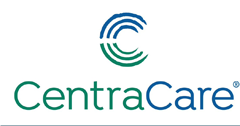Take Heart America: A Comprehensive, Community-Wide, Systems-Based Approach to the Treatment of Cardiac Arrest
Document Type
Article
Publication Date
4-2011
Abstract
OBJECTIVES:
To determine out-of-hospital cardiac arrest survival rates before and after implementation of the Take Heart America program (a community-based initiative that sequentially deployed all of the most highly recommended 2005 American Heart Association resuscitation guidelines in an effort to increase out-of-hospital cardiac arrest survival).
PATIENTS:
Out-of-hospital cardiac arrest patients in Anoka County, MN, and greater St. Cloud, MN, from November 2005 to June 2009.
INTERVENTIONS:
Two sites in Minnesota with a combined population of 439,692 people (greater St. Cloud and Anoka County) implemented: 1) widespread cardiopulmonary resuscitation and automated external defibrillator skills training in schools and businesses; 2) retraining of all emergency medical services personnel in methods to enhance circulation, including minimizing cardiopulmonary resuscitation interruptions, performing cardiopulmonary resuscitation before and after single-shock defibrillation, and use of an impedance threshold device; 3) additional deployment of automated external defibrillators in schools and public places; and 4) protocols for transport to and treatment by cardiac arrest centers for therapeutic hypothermia, coronary artery evaluation and treatment, and electrophysiological evaluation.
MEASUREMENTS AND MAIN RESULTS:
More than 28,000 people were trained in cardiopulmonary resuscitation and automated external defibrillator use in the two sites. Bystander cardiopulmonary resuscitation rates increased from 20% to 29% (p = .086, odds ratio 1.7, 95% confidence interval 0.96-2.89). Three cardiac arrest centers were established, and hypothermia therapy for admitted out-of-hospital cardiac arrest victims increased from 0% to 45%. Survival to hospital discharge for all patients after out-of-hospital cardiac arrest in these two sites improved from 8.5% (nine of 106, historical control) to 19% (48 of 247, intervention phase) (p = .011, odds ratio 2.60, confidence interval 1.19-6.26). A financial analysis revealed that the cardiac arrest centers concept was financially feasible, despite the costs associated with high-quality postresuscitation care.
CONCLUSIONS:
The Take Heart America program doubled cardiac arrest survival when compared with historical controls. Study of the feasibility of generalizing this approach to larger cities, states, and regions is underway.
Recommended Citation
Lick, Charles J.; Aufderheide, Tom P.; Niskanen, Robert A.; Steinkamp, Janet E.; Davis, Scott; Osaki-Holm, Susie; Olsen, John; and Lurie, Keith MD, "Take Heart America: A Comprehensive, Community-Wide, Systems-Based Approach to the Treatment of Cardiac Arrest" (2011). Articles. 46.
https://digitalcommons.centracare.com/articles/46

